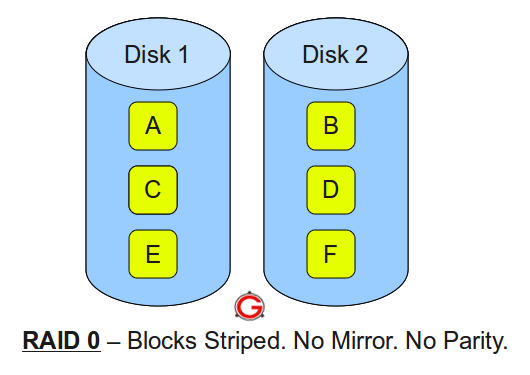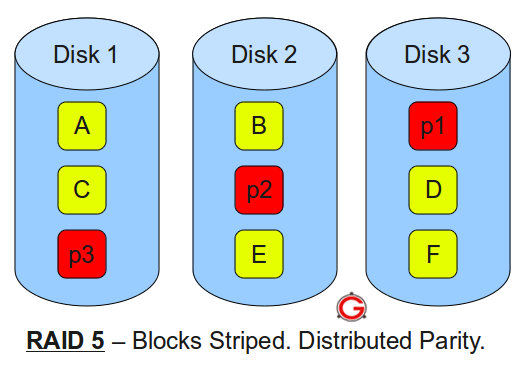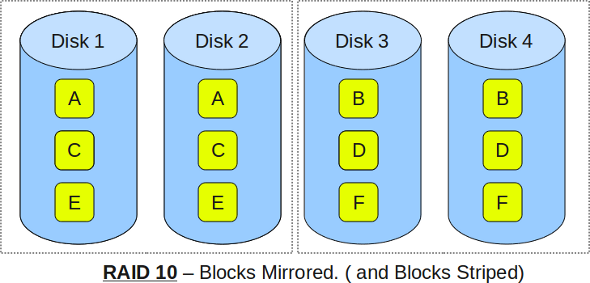RAID Setups Explained
30 Dec 2015 | RAIDRAID : Redundant Array of Independent Disks
RAID is a data storage virtualization technology that combines multiple physical disk drive components into a single logical unit for the purposes of data redundancy, performance improvement, or both.
Data is distributed across the drives in one of several ways, referred to as RAID levels, depending on the required level of redundancy and performance. The different layouts are named by the word RAID followed by a number, for example RAID 0 or RAID 1. Each RAID level provides a different balance among the key goals: reliability, availability, performance, and capacity. RAID levels greater than RAID 0 provide protection against unrecoverable sector read errors, as well as against failures of whole physical drives.
Some important terms to know (with relation to RAID setups) are :
Striping: the technique of segmenting logically sequential data, such as a file, so that consecutive segments are stored on different physical storage devices.
Disk Mirroring: The replication of logical disk volumes onto separate physical hard disks in real time to ensure continuous availability.EG if disk B is a mirror of disk A , all data on disk A is copied in real time to disk B.
Parity: Im not yet too sure how this works in relation to RAID, but parity is just simple XOR data.

Raid 0: Requires a minimum of 2 disks; it has excellent performance because its striped, but theres no redundancy; don’t use this for any critical system

RAID 1: Requires a minimum of 2 disks; it has good performance because there are no parity or stripes;it has got excellent redundancy since blocks are mirrored

RAID 5: Requires 3 disks; it has good performance (striped), good redundancy (distributed parity); Best cost effective option providing both performance and redundancy. Use this for DB that is heavily read oriented. Write operations will be slow.

RAID 10/1+0: Requires a minimum of 4 disks; Called a “stripe of mirrors”; excellent redundancy (mirrored), excellent performance (striped); If affordable, the BEST option for any mission critical applications (especially databases).
